Walid Regragui possesses two of the most distinct wingers in this generation. Sofiane Boufal, who has been playing for Angers in France for over three years, will face France in Morocco’s first World Cup semi-final. Hakim Ziyech of Chelsea, on the other hand, can produce dangerous balls inside the box as well as switch plays at any given position.
Both players are skilled at using the large space to cut in and be a threat. This was one of the main events they had been looking forward to playing together for years. The midfield and attack seemed to be settling in well with the Fiorentina star, Sofyan Amrabat, and the 22-year-old Azzedine Ounahi.
In a tournament like this, a team like Morocco needs the best flank outlets for a counter-attacking squad. In a significant competition, both players supplied the dynamism Regragui had been longing for. In this tactical analysis in the form of a scout report, we’ll look at how the wingers contributed to Morocco’s triumph in Qatar.
Ziyech’s flair
Ziyech is renowned for his incredible talent at curling into deadly balls while making it seem effortless. His left foot is regarded as one of the greatest in the world, and he has shown his abilities at Chelsea and Ajax in recent years. Regragui has supported him like no other, giving him a place in the squad no matter what, even if he hasn’t felt as at home in England as he did at Ajax.
Here is his touch map from the beginning of the competition to the World Cup semifinal, when he will play France. He drives up front while dropping deep to assist his teammates in the progression of the play. This helps the tactics Regragui had been using and is comfortable with.
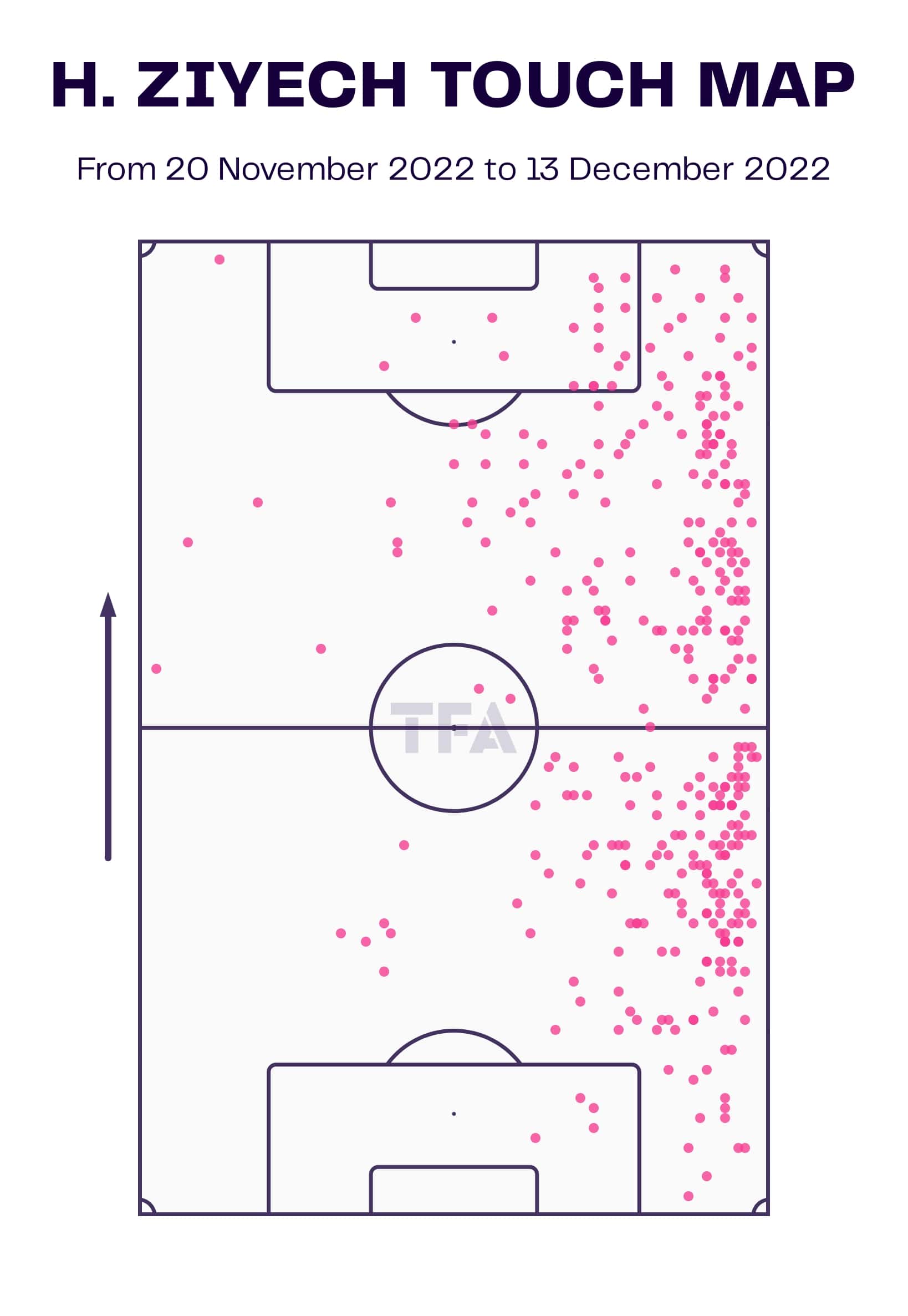
He takes up space on the right side of the field, somewhat like Lionel Messi, to draw people out of position and provide room for others to go into a better one. He often serves as a provider, which enables the Moroccans to find room. The Ajax supporters have been reminded of their experiences in the Netherlands by his ease on his preferred right side.
The touch map just shows Ziyech’s desire to become more involved in the penalty area. Regragui’s expectations for the winger are evident from the fact that he has only received 20 touches inside the penalty area. His crosses have changed the course of the game for Morocco, posing a danger by having only one man produce an important pass while the rest go for a header.
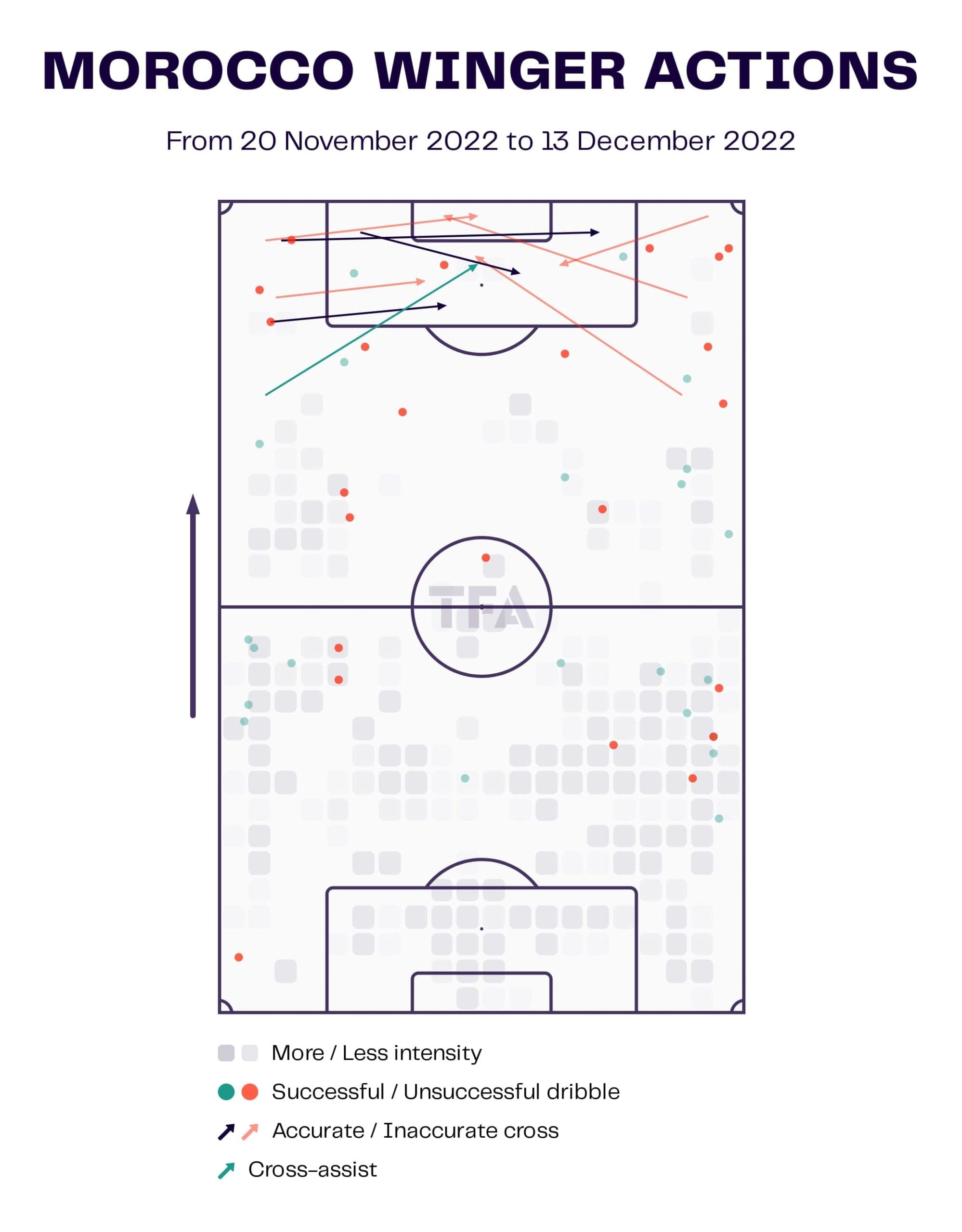
A good example of how effective crossing was in Morocco’s game plans is seen in the picture above. Youssef En-Nesyri, a centre-forward who is 1.88 metres tall and is skilled at making crosses to reach the back of the net, had been eagerly sought by both wingers.
PSG fullback Achraf Hakimi at right back and Ziyech in front of him make up Morocco’s strongest section on the right side of the field. Ounahi has been deployed in the middle of the field, a little to the right of the centre rather than to the left. The squad now has the freedom to move about both under pressure and without it.
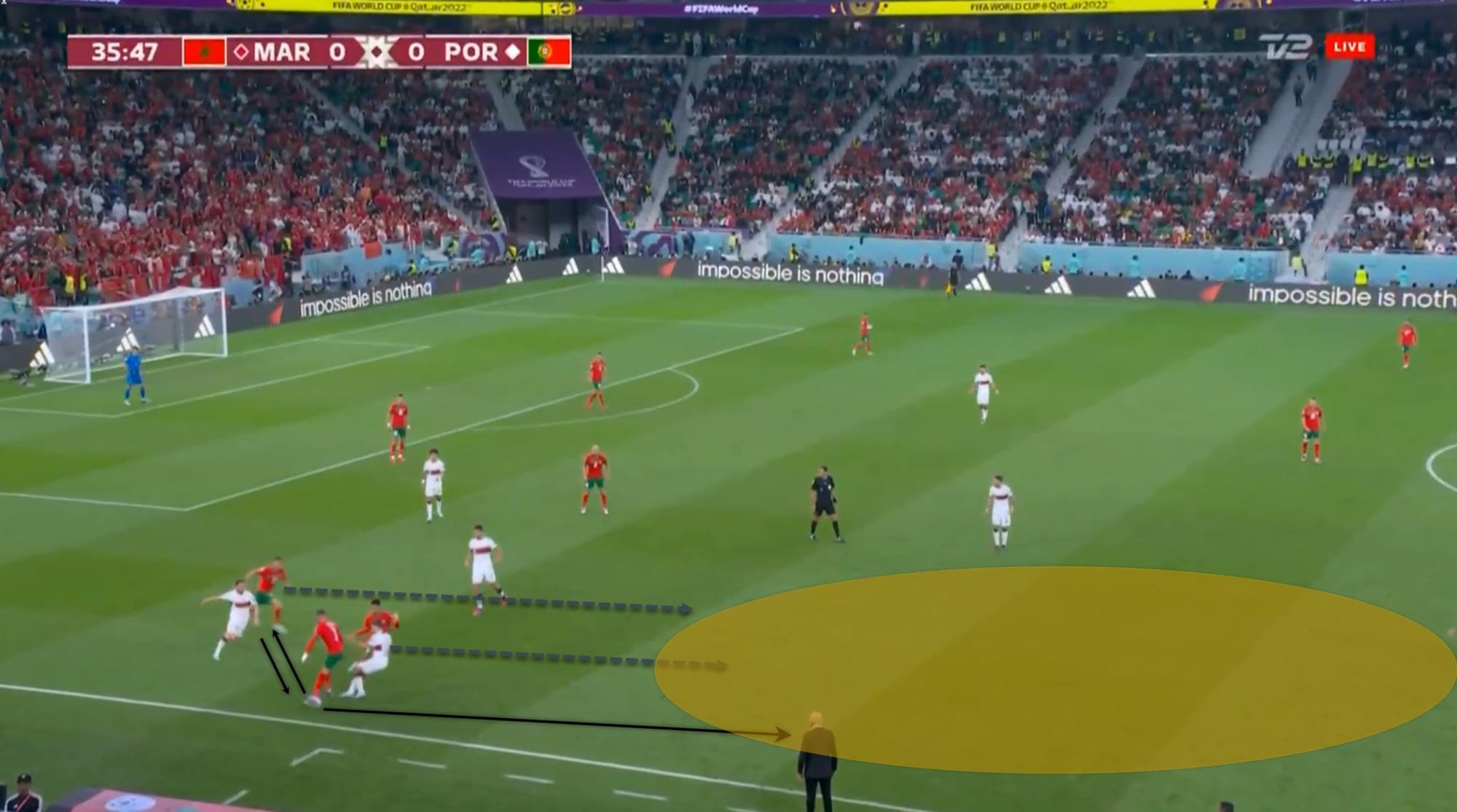
One such scenario is seen above when Hakimi finds Ounahi and Ziyech as Portugal presses hard. In high-pressing situations, Ziyech’s responsibility has been to keep the ball until his teammates can find open areas to sprint into. After giving the ball to Ziyech, Hakimi sprints from the back in search of combo plays to beat the press.
His ability to keep the ball and not lose it while attempting to make crucial passes to the final third has been crucial to Morocco’s success in playing out from the back. Another example versus defending champions Spain will demonstrate how often he likes to use the tactic.
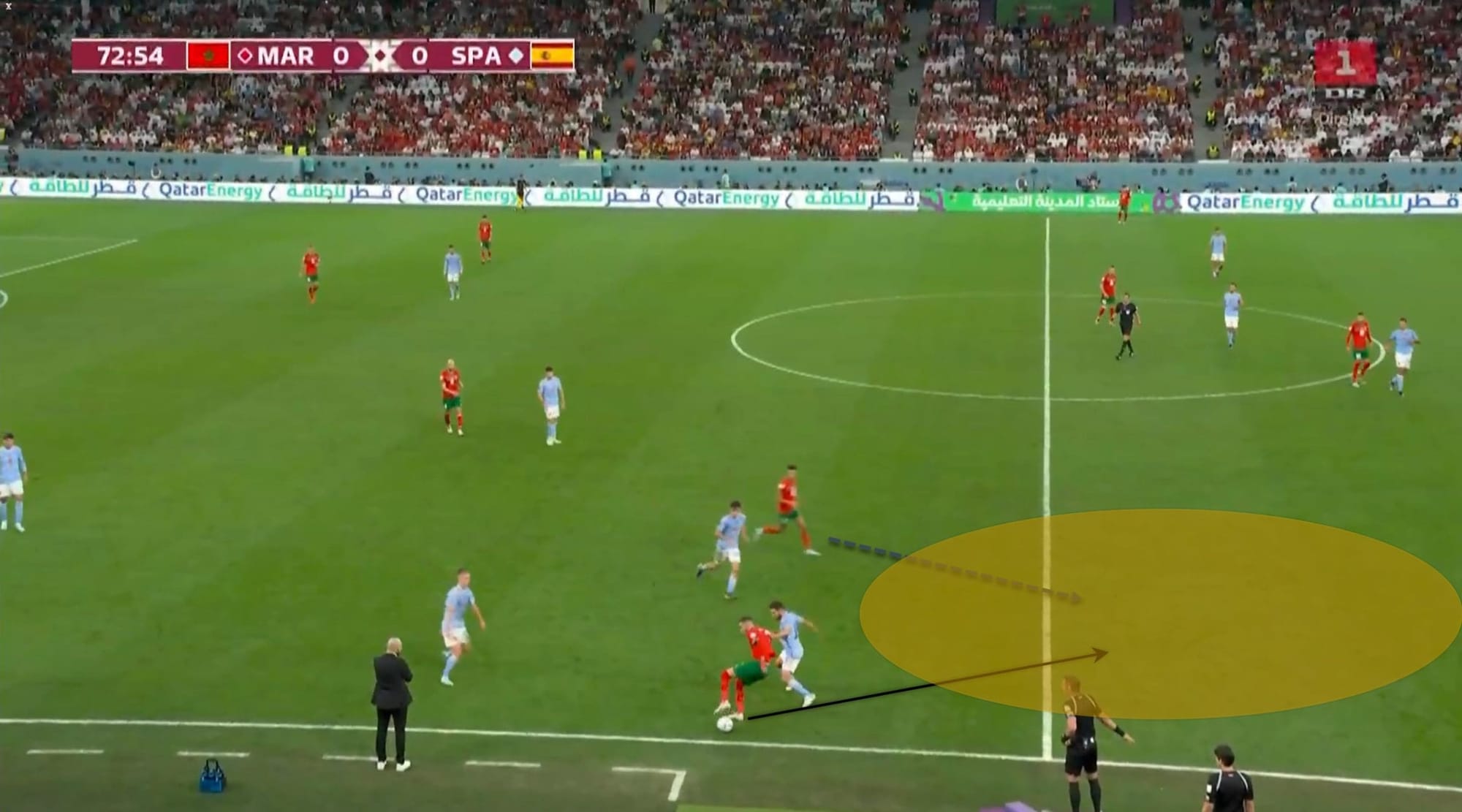
In the above image, Ziyech is surrounded by three Spaniards on his strong right side. He keeps the ball towards his own goal, as shown in the picture, and flicks it to the moving Ounahi with his stronger foot. The flicks have been his strongest feature, luring opponents to slickly release the ball from him, resulting in either a foul if Morocco loses the possession or advances from the press.
Ounahi is the player in the midfield who runs back and forth between the wide and central zones to mix up the play. His work rate has been remarkable from the beginning of the tournament. The kid has shown a high level of skill in controlling the speed of the game. This has been an excellent three-man combination on the right side of the pitch.
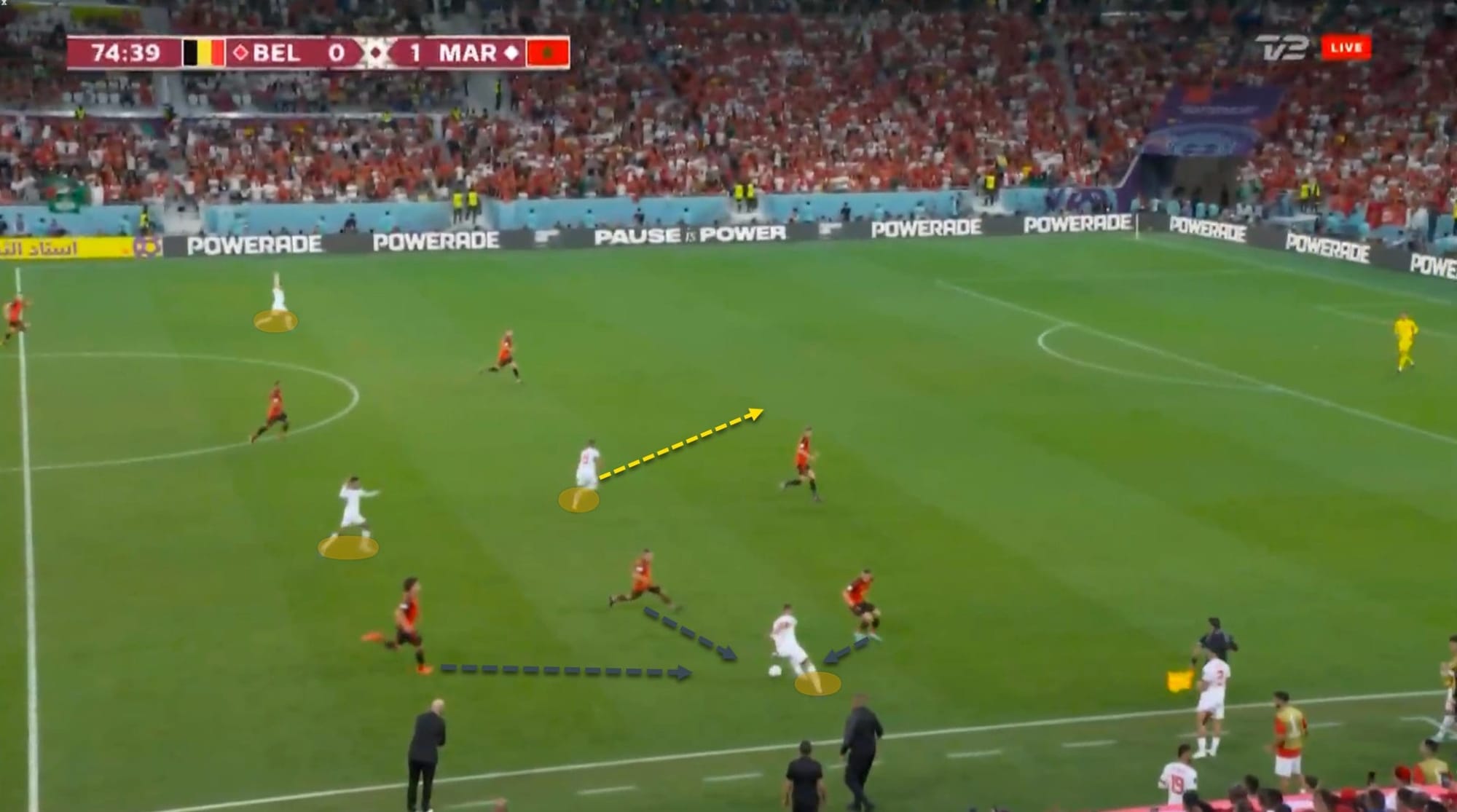
Above is another circumstance in which Ziyech pulls almost three Belgian players to allow space for Ounahi and the centre-forward to destroy the Belgian defence. He holds onto the ball until two or more players come after him, leaving a large gap for others to exploit.
The graphic below depicts a scenario in which Hakimi finds Ounahi on the right side of the field, who lays off Ziyech, who is immediately behind. Following the passes, both players rush into wide spaces to damage Canada’s left defence. Ziyech was placed in a position to perform what he does best: switch plays. While all of this is going on, the centre-forward has time to create some space to collect a long ball from the middle.
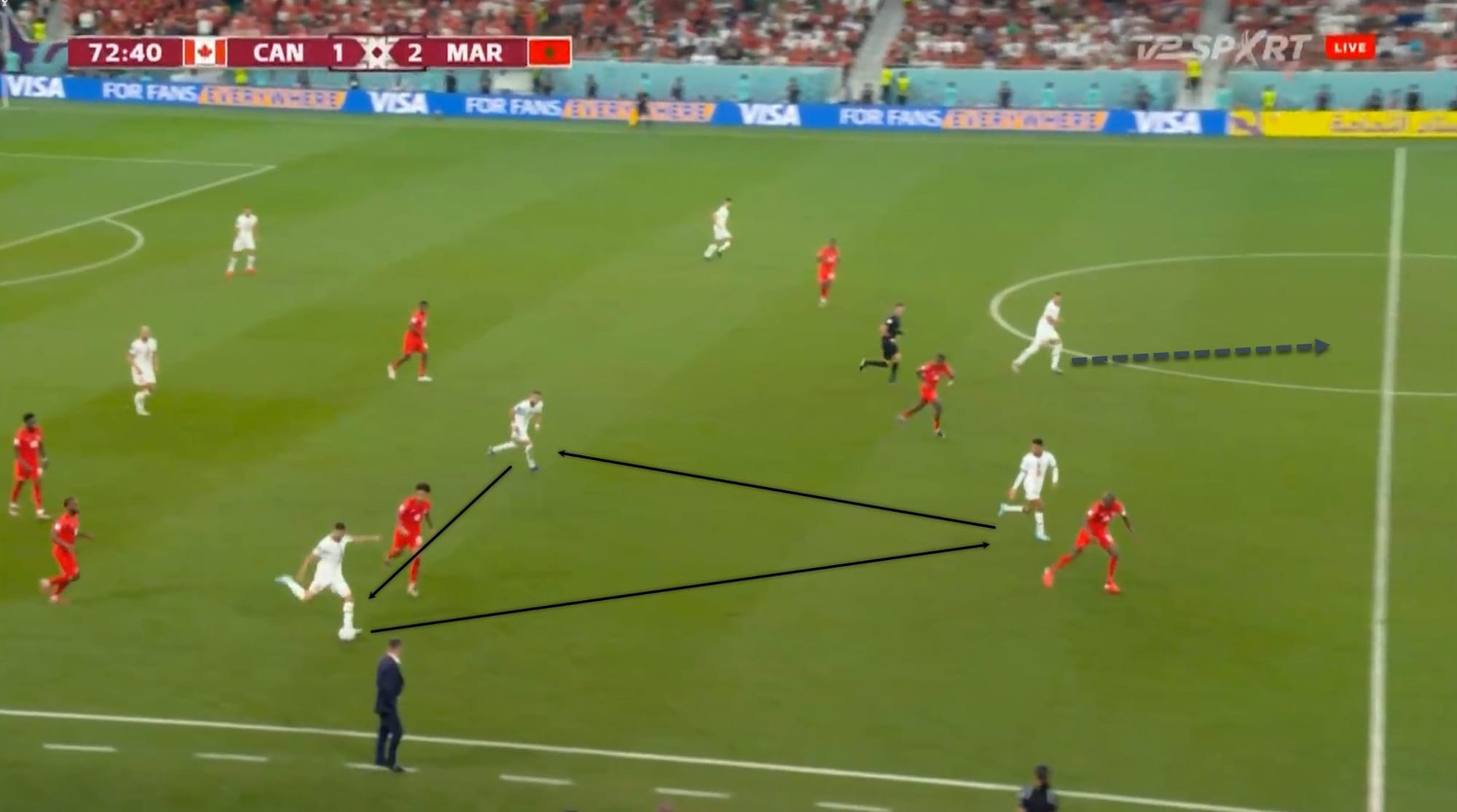
This triangle has been a game-changer for Regragui’s squad, as they seem to be able to defeat any team’s press in under four seconds to counter them at the break. A counter-attacking squad with the right personnel results in a competitive but enjoyable 90-minute game.
The picture below shows Ziyech applying pressure after losing the ball following a failed pass, and Ziyech and the forward team up to go for the ball. When the striker takes the initiative, Ziyech instantly sees a chance to push Unai Simón, Spain’s goalkeeper, resulting in him throwing the ball away in his half. Ziyech’s knowledge and pace combined to help Regragui defeat Spain in a tense Round of 16 matches.
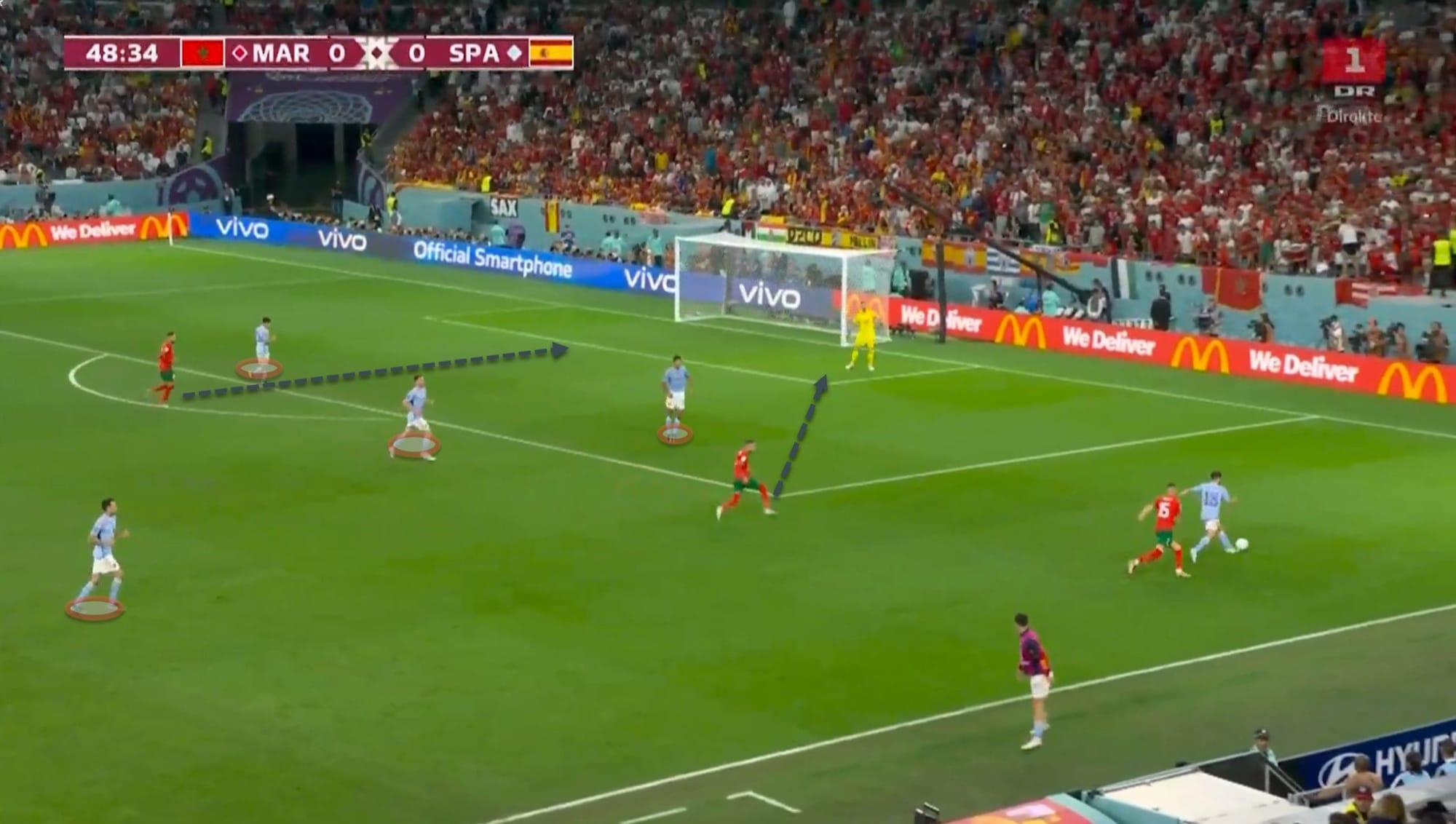
Counter-threats have performed the function that Regragui has established to quickly boost the morale of an underdog side. After cutting inside, Ziyech will be in a prime position to make a long pass over the runners who are looking for a through ball in the gap behind the defensive line. The picture below is one of the instances where Ziyech has various alternatives to pick from.
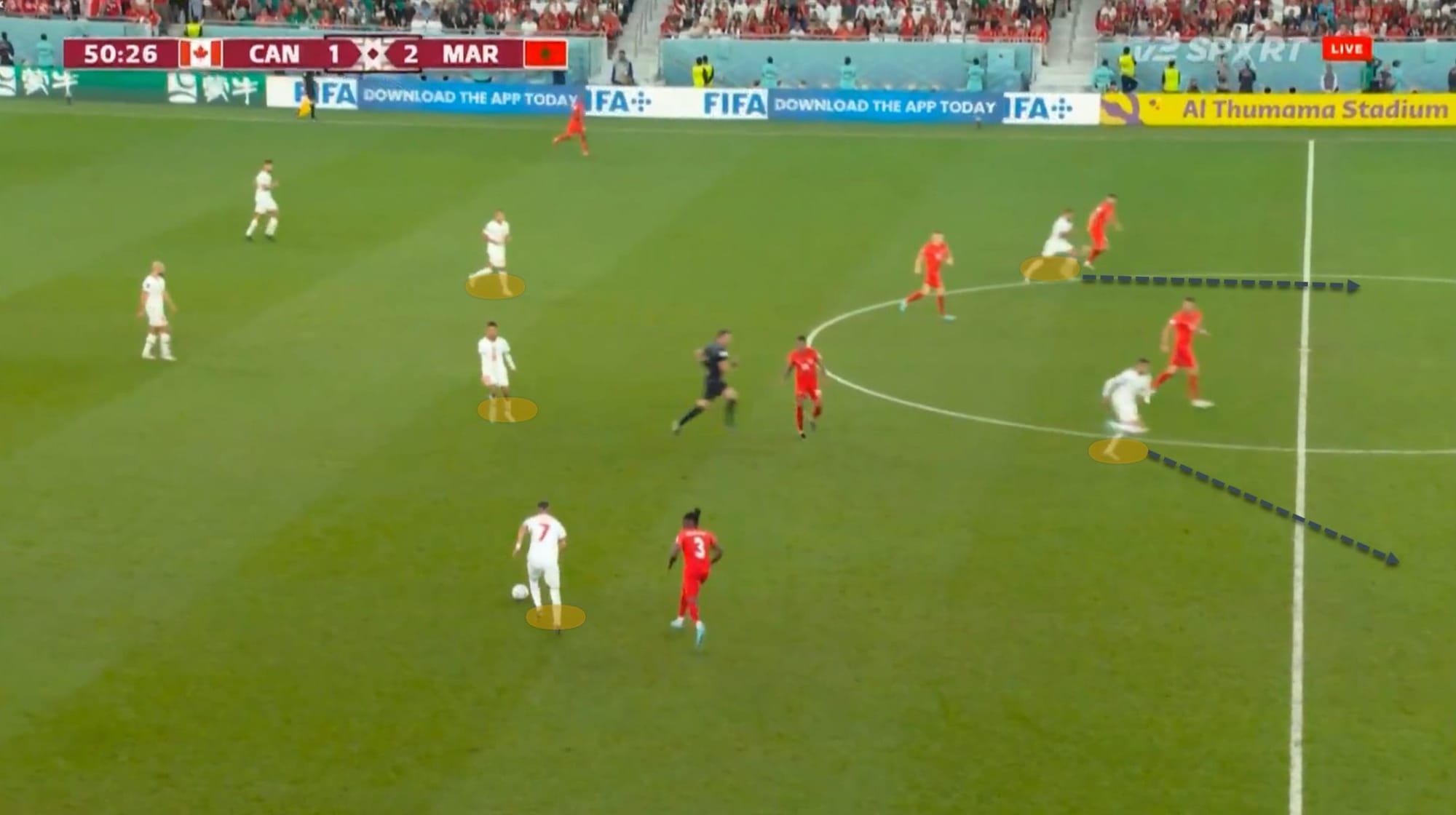
This is perhaps the most comfortable position for a right winger. Ziyech has delivered the best for the manager and the squad as a left-footer with the greatest passing accuracy.
Boufal’s creativity
Boufal has been tearing through defences like he was meant to do so. Every time he possessed the ball, it was extremely simple for him to draw fouls and pose a threat. The picture below illustrates his ball progression throughout the competition. Although his missed dribbles were many, his progressive runs and successful dribbles provided a much greater danger to his opponents.
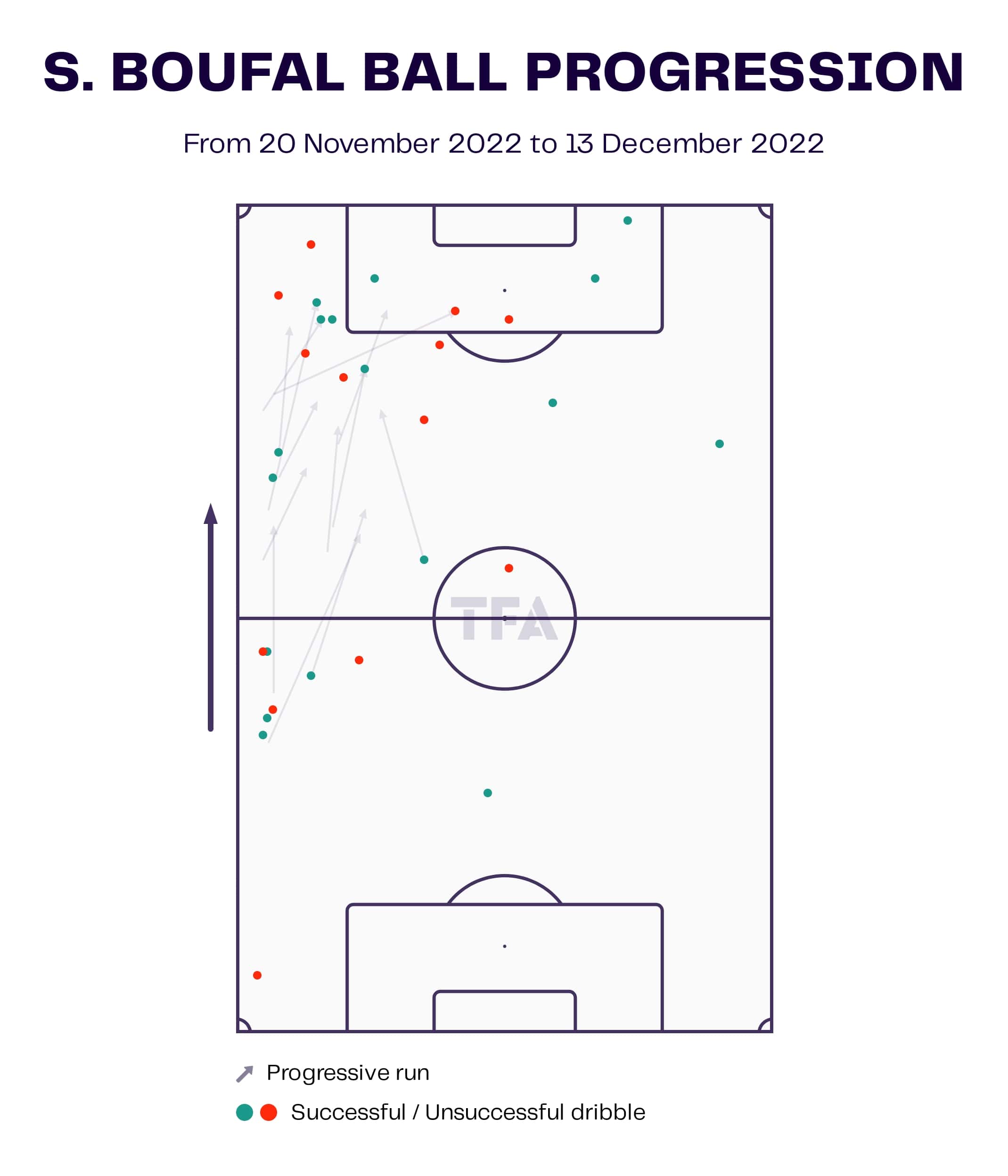
All of a sudden, it was very easy for him to be the ideal left-winger for a World Cup-winning team. His introduction to the squad left the fans in a state of happiness while his style of play was perfect for Regragui.
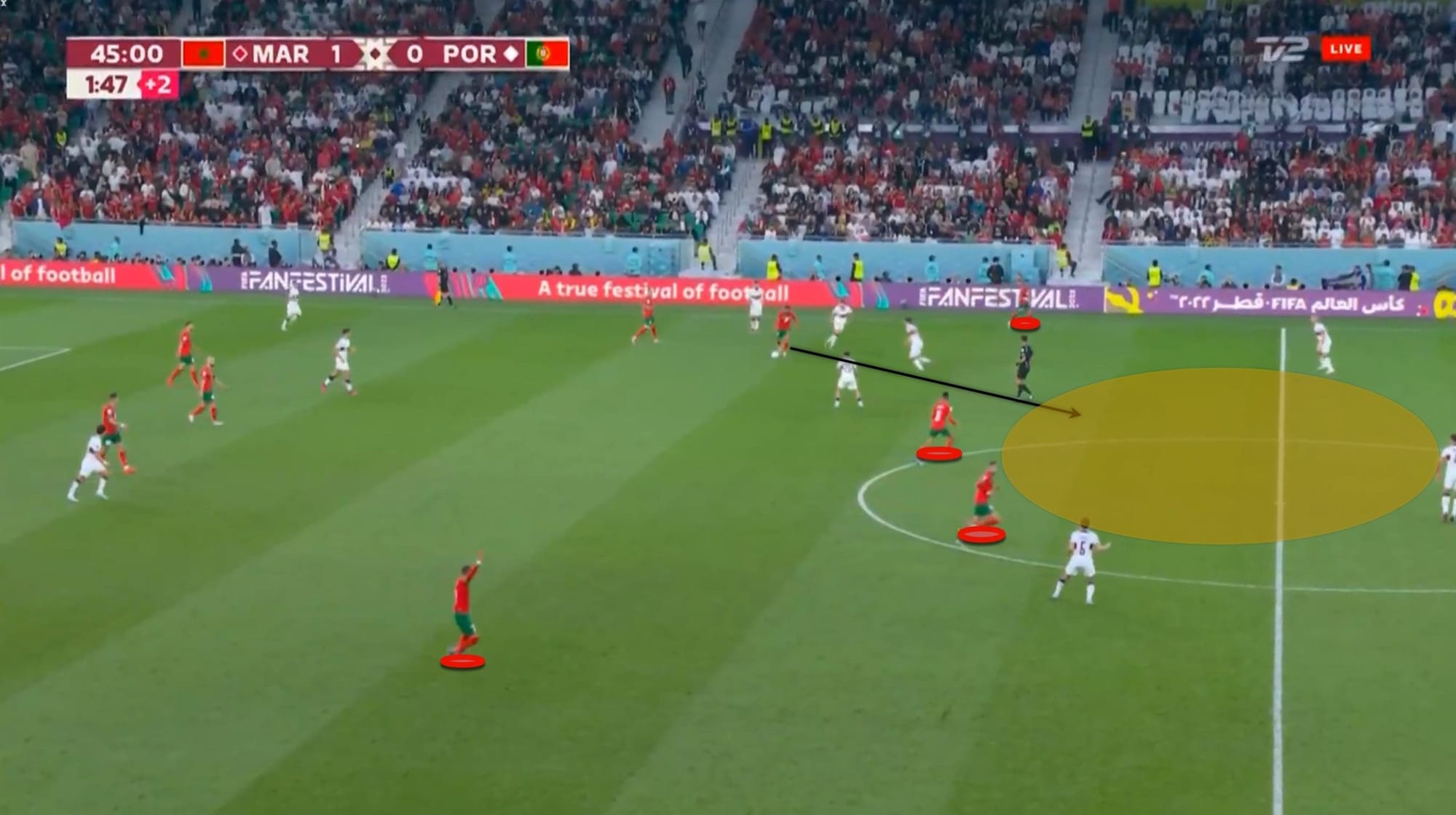
Boufal is seen cutting in from the left side to find passing possibilities against Portugal in the quarter-finals. It was against a Euro-winning team in a crucial knockout round, and it seemed to be quite simple for Boufal to stay around and generate a slew of chances.
The midfielders rank up high to locate passes to overcome the press, leaving Ziyech on the far side with wide expanses. This cleared the door for seeking answers during difficult circumstances.
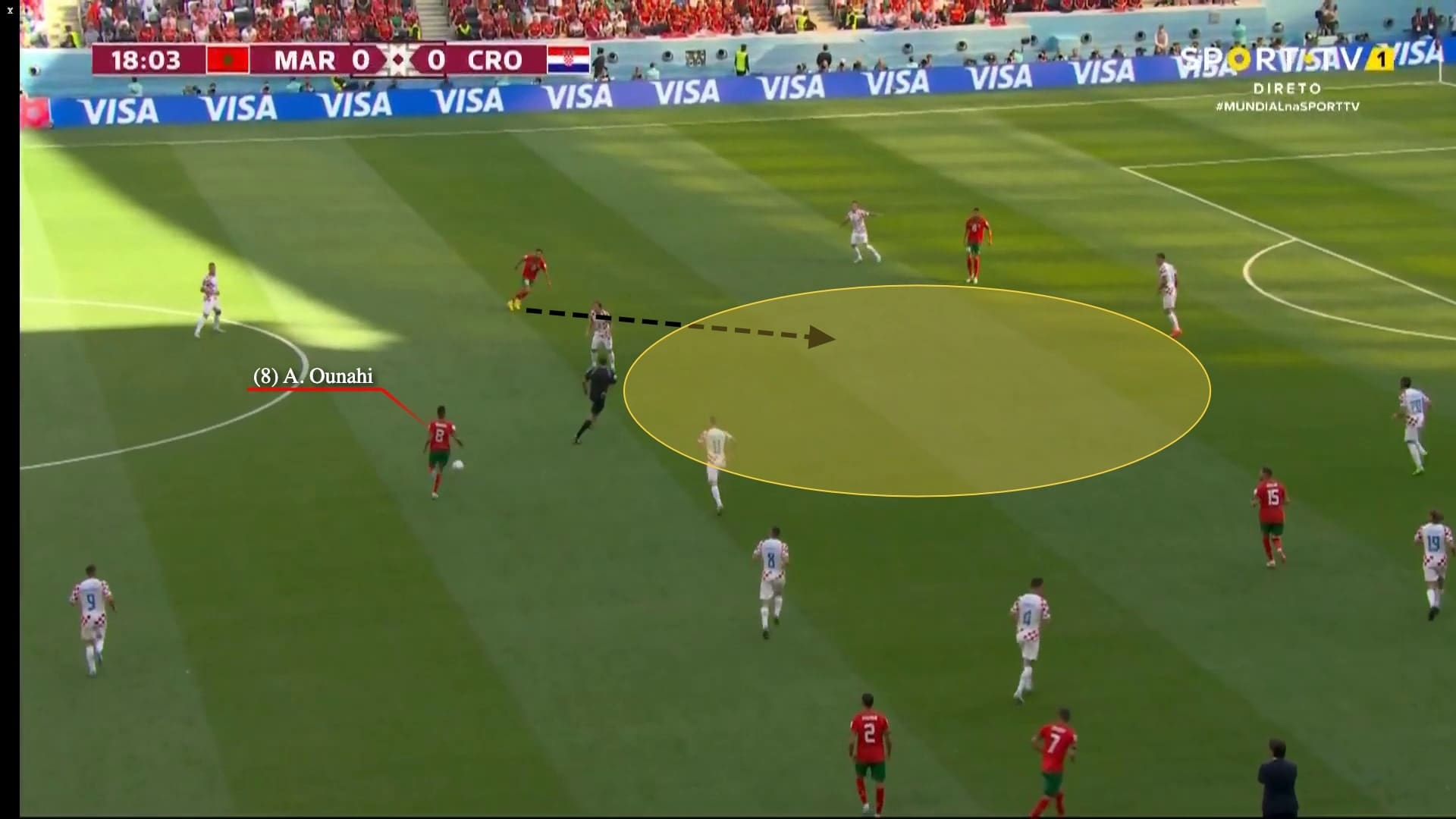
Boufal would sometimes shift inside the block to the half-spaces to be in a better position to attempt a shot on goal or enable the wing-back to run up high. Noussair Mazraoui, an Ajax youngster with speed and skill while attacking, played on the left back. Amrabat was paired alongside Ounahi on the left side, aiding Boufal and Mazraoui.
The winger sliding inside confused the defence at times as to who was to face the winger and who was to mark the forward. In the top image, Modric seems to be ignorant of Boufal, who is behind him falling to the half-spaces.
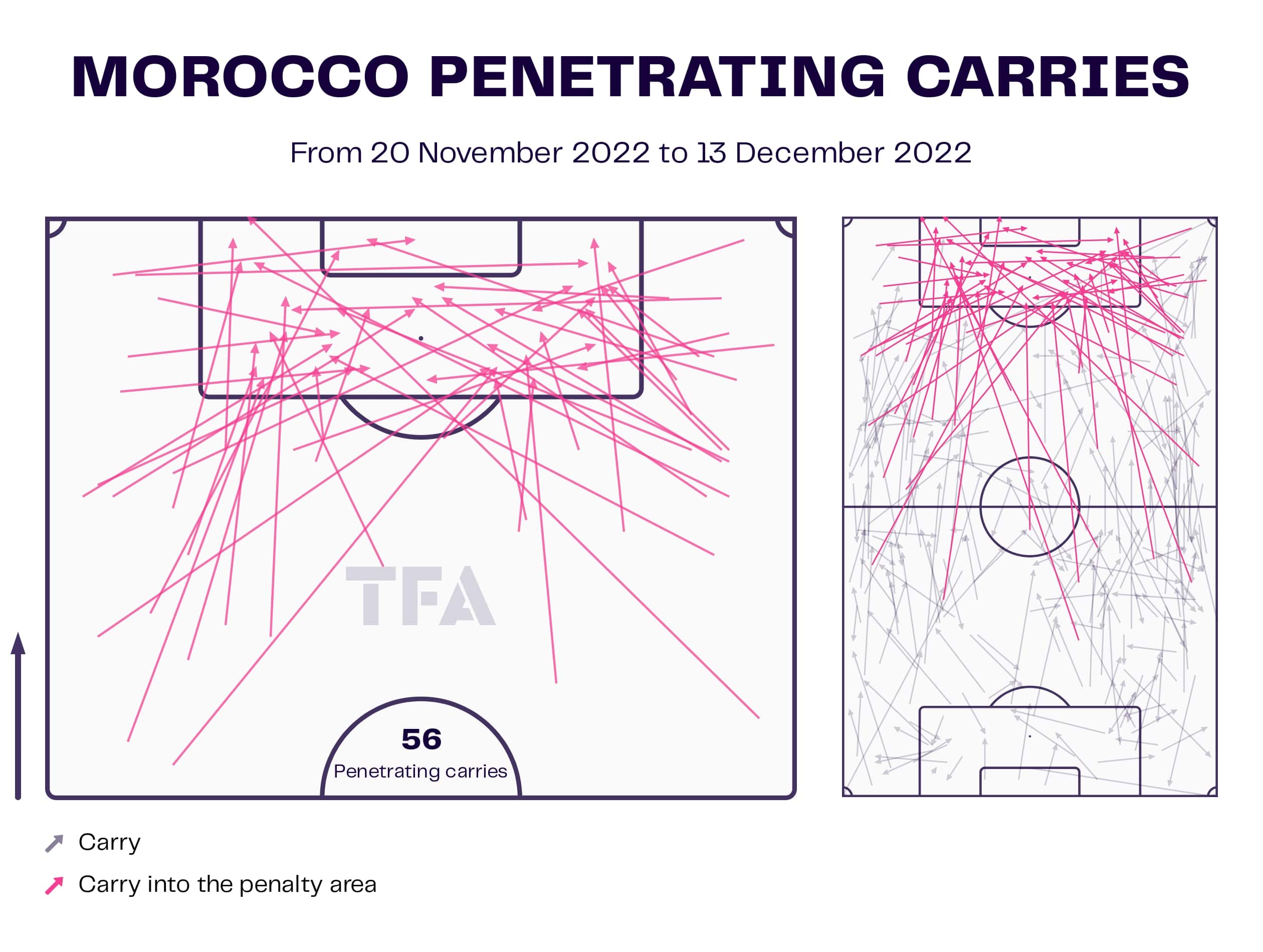
The amount of penetrating carries in the above chart shows how much the wingers had to offer for a side like Morocco, which is likely to become the first African team to reach the World Cup semi-finals. The carries given by Boufal and Ziyech have to be the most efficient. The amount of carries into the box is astounding, reaching 56.
Morocco’s ability to cross has provided them with an advantage over other teams who were unable to cross properly. Boufal’s body feints and falling shoulders were vital in maintaining the squad’s confidence.
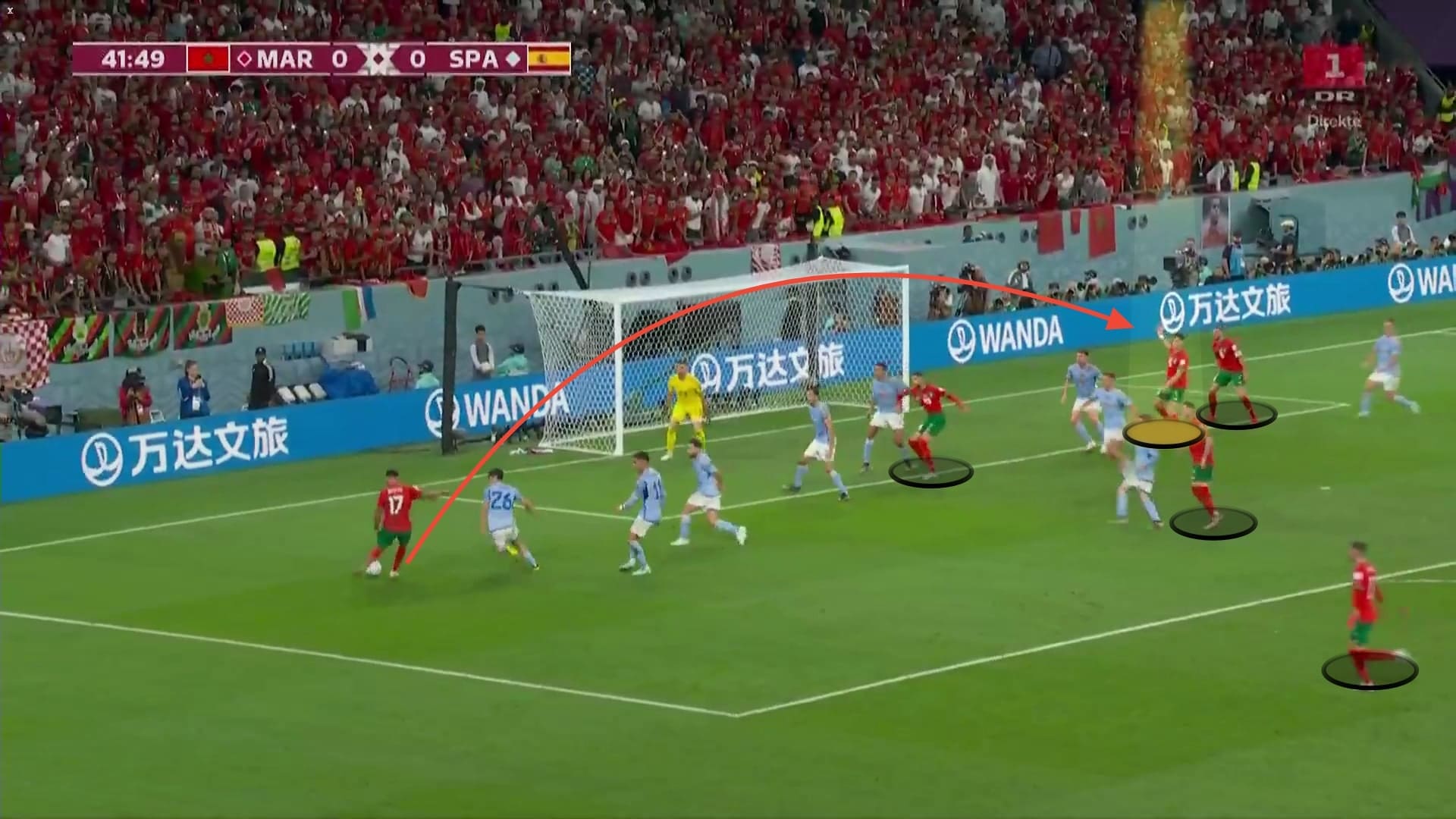
Boufal first fakes a cross with his right foot to get the ideal crossing opportunity aiming towards the far post. His impersonations relieve the pressure for his next action, as shown in the above image. This allows teammates to establish a better position to head the ball. Boufal has done wonders for Regragui’s ambitious side, which aims to make history like no other.
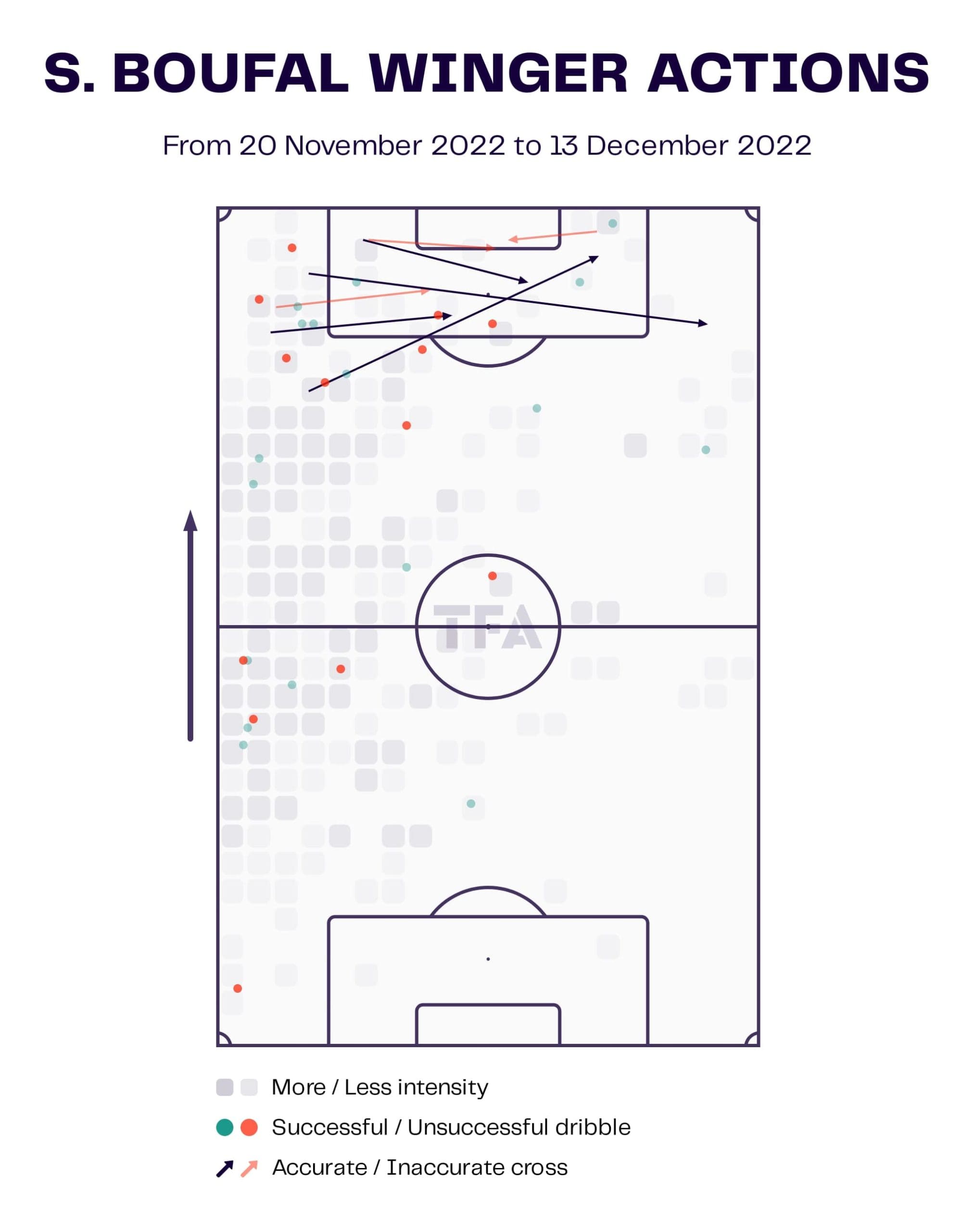
The above graphic depicts Boufal’s activities as well as the intensity of the game. His energy demonstrates that he is more engaged in build-up play from the back to the final third. As shown in the accompanying figure, his precise crosses presented a larger danger inside the box.
Conclusion
Given the Moroccan wingers’ capabilities shown in the analysis, they will be the ones to give Morocco the advantage against reigning champions France in the second semi-final. These two are the missing pieces for a team like Morocco, who defeated the strongest opponents in the most prestigious competition.
They are the clear favourites to meet Argentina in the final after startling the globe by defeating Spain in the Round of 16 and European Champions Portugal in the quarter-finals.





Comments